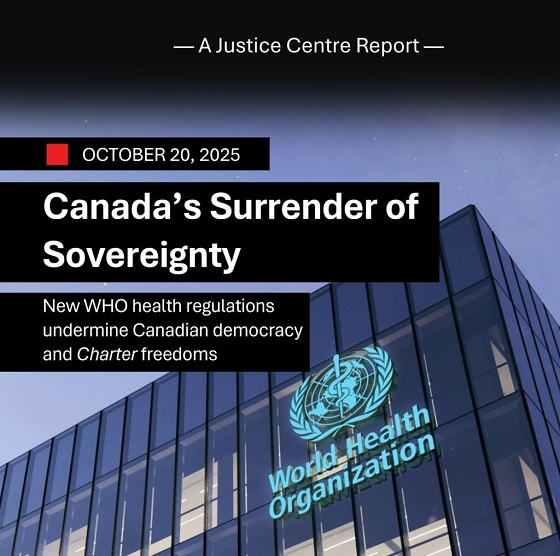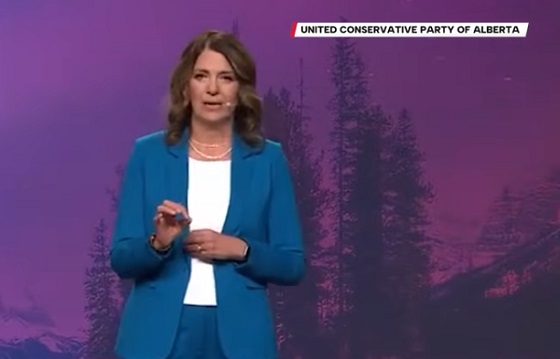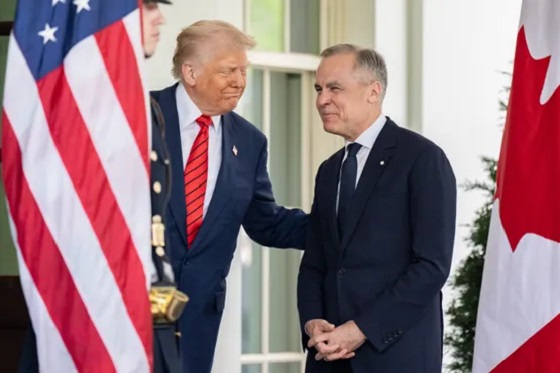Uncategorized
Province encouraging Alberta Doctors to see more patients by lifting daily cap

Improving Albertans’ access to doctors
To help increase patient access to physicians, there will no longer be a daily cap on the number of visits a physician can fully bill.
During the negotiations with the Alberta Medical Association (AMA), Alberta’s government heard that Alberta’s doctors could safely see more patients than the current cap allowed.
Albertans want to know that they can see a doctor when they need one, and physicians want to be able to provide Albertans with the health-care services they need. By changing the daily cap policy, some of the immediate pressures for services provided by general practitioners and specialists, including pediatricians and ophthalmologists, will be addressed. By lifting the cap, physicians will be fully compensated for every visit rather than receiving a discounted rate if they provide more than 50 visit services in one day, which is the current practice.
“We’re moving forward to implement the new agreement, starting with ending the daily visit services cap policy and working to put rate increases in place. We’ve heard from some physicians that the daily visit cap was having a negative impact on patient access, so this change addresses those concerns. It is also part of the new agreement with the AMA where we are listening to physicians and working with them as partners moving forward.”
“The AMA agreement allows physicians and government to work together on challenges facing patients and physicians in the health-care system. This early step to remove the services cap is an important example that will allow more physicians to care for more patients while helping to stabilize physician practices.”
Lump sum payment
The agreement between the AMA and the province also includes a one per cent rate increase in each of the next three years and a one per cent recognition lump sum payment in 2022-23.
Alberta physicians were at the forefront of the pandemic and the one-time payment for eligible practising physicians is in recognition of that work during the 2021-22 fiscal year. This lump sum payment is approximately $45 million and will go to the AMA to distribute to their members by the end of 2022.
In addition to the lump sum payment, the government is working with the AMA to implement the one per cent rate increase for 2022-23. The increase applies to fee-for-service and alternative relationship plan rates, providing an additional $46 million to physicians.
As outlined in the AMA agreement, the rate increase is heavily weighted to specialties facing the greatest pressures, such as family medicine. Alberta’s government and the AMA are working together to distribute these increases across and within specialties. Increases will be effective April 1, 2022, and are expected to be finalized by March 31, 2023.
Quick facts
- The daily visit services cap policy was introduced as part of the Physician Funding Framework in 2020.
- The intent of the policy was to support quality patient care by reducing physician burnout while addressing fiscal constraint for the province.
- It applies to all physician services that are defined in the Schedule of Medical Benefits (SOMB) as “visits” with a “V” category code that physicians provide to patients in person, including physician office visits, consultations and counselling services. Procedures and tests that physicians provide are not billed as visits.
- Under the current policy, physicians are compensated 100 per cent for up to 50 visit services billings in a day, 50 per cent for between 51 and 65 visit services, and there is no compensation for visit services billings greater than 66.
- Physicians working in rural and remote areas, hospital visits and virtual care are exempt from the current policy.
- The policy change (to lift the cap) aligns Alberta with most other jurisdictions.
- Alberta Health is working on updating the SOMB and billing system to operationalize this change. A Medical Bulletin and a new SOMB will be posted when information technology changes are complete.
- The daily visit services cap policy change will be reviewed and its impacts assessed before determining the future policy beyond the current fiscal year.
Uncategorized
Cost of bureaucracy balloons 80 per cent in 10 years: Public Accounts

The cost of the bureaucracy increased by $6 billion last year, according to newly released numbers in Public Accounts disclosures. The Canadian Taxpayers Federation is calling on Prime Minister Mark Carney to immediately shrink the bureaucracy.
“The Public Accounts show the cost of the federal bureaucracy is out of control,” said Franco Terrazzano, CTF Federal Director. “Tinkering around the edges won’t cut it, Carney needs to take urgent action to shrink the bloated federal bureaucracy.”
The federal bureaucracy cost taxpayers $71.4 billion in 2024-25, according to the Public Accounts. The cost of the federal bureaucracy increased by $6 billion, or more than nine per cent, over the last year.
The federal bureaucracy cost taxpayers $39.6 billion in 2015-16, according to the Public Accounts. That means the cost of the federal bureaucracy increased 80 per cent over the last 10 years. The government added 99,000 extra bureaucrats between 2015-16 and 2024-25.
Half of Canadians say federal services have gotten worse since 2016, despite the massive increase in the federal bureaucracy, according to a Leger poll.
Not only has the size of the bureaucracy increased, the cost of consultants, contractors and outsourcing has increased as well. The government spent $23.1 billion on “professional and special services” last year, according to the Public Accounts. That’s an 11 per cent increase over the previous year. The government’s spending on professional and special services more than doubled since 2015-16.
“Taxpayers should not be paying way more for in-house government bureaucrats and way more for outside help,” Terrazzano said. “Mere promises to find minor savings in the federal bureaucracy won’t fix Canada’s finances.
“Taxpayers need Carney to take urgent action and significantly cut the number of bureaucrats now.”
Table: Cost of bureaucracy and professional and special services, Public Accounts
| Year | Bureaucracy | Professional and special services |
|
$71,369,677,000 |
$23,145,218,000 |
|
|
$65,326,643,000 |
$20,771,477,000 |
|
|
$56,467,851,000 |
$18,591,373,000 |
|
|
$60,676,243,000 |
$17,511,078,000 |
|
|
$52,984,272,000 |
$14,720,455,000 |
|
|
$46,349,166,000 |
$13,334,341,000 |
|
|
$46,131,628,000 |
$12,940,395,000 |
|
|
$45,262,821,000 |
$12,950,619,000 |
|
|
$38,909,594,000 |
$11,910,257,000 |
|
|
$39,616,656,000 |
$11,082,974,000 |
Uncategorized
New report warns WHO health rules erode Canada’s democracy and Charter rights

The Justice Centre for Constitutional Freedoms has released a new report titled Canada’s Surrender of Sovereignty: New WHO health regulations undermine Canadian democracy and Charter freedoms. Authored by Nigel Hannaford, a veteran journalist and researcher, the report warns that Canada’s acceptance of the World Health Organization’s (WHO) revised International Health Regulations (IHR) represents a serious erosion of national independence and democratic accountability.
The IHR amendments, which took effect on September 19, 2025, authorize the WHO Director-General to declare global “health emergencies” that could require Canada to follow directives from bureaucrats in Geneva, bypassing the House of Commons and the will of Canadian voters.
The WHO regards these regulations as “binding,” despite having no ability or legal authority to impose such regulations. Even so, Canada is opting to accept the regulations as binding.
By accepting the WHO’s revised IHR, the report explains, Canada has relinquished its own control over future health crises and instead has agreed to let the WHO determine when a “pandemic emergency” exists and what Canada must do to respond to it, after which Canada must report back to the WHO.
In fact, under these International Health Regulations, the WHO could demand countries like Canada impose stringent freedom-violating health policies, such as lockdowns, vaccine mandates, or travel restrictions without debate, evidence review, or public accountability, the report explains.
Once the WHO declares a “Pandemic Emergency,” member states are obligated to implement such emergency measures “without delay” for a minimum of three months.
Importantly, following these WHO directives would undermine government accountability as politicians may hide behind international “commitments” to justify their actions as “simply following international rules,” the report warns.
Canada should instead withdraw from the revised IHR, following the example of countries like Germany, Austria, Italy, Czech Republic, and the United States. The report recommends continued international cooperation without surrendering control over domestic health policies.
Constitutional lawyer Allison Pejovic said, “[b]y treating WHO edicts as binding, the federal government has effectively placed Canadian sovereignty on loan to an unelected international body.”
“Such directives, if enforced, would likely violate Canadians’ Charter rights and freedoms,” she added.
Mr. Hannaford agreed, saying, “Canada’s health policies must be made in Canada. No free and democratic nation should outsource its emergency powers to unelected bureaucrats in Geneva.”
The Justice Centre urges Canadians to contact their Members of Parliament and demand they support withdrawing from the revised IHR to restore Canadian sovereignty and reject blind compliance with WHO directives.
-

 Alberta2 days ago
Alberta2 days agoThis new Canada–Alberta pipeline agreement will cost you more than you think
-

 Energy2 days ago
Energy2 days agoUnceded is uncertain
-

 Energy1 day ago
Energy1 day agoCanada following Europe’s stumble by ignoring energy reality
-

 Automotive2 days ago
Automotive2 days agoPower Struggle: Governments start quietly backing away from EV mandates
-

 Business1 day ago
Business1 day agoCanada’s climate agenda hit business hard but barely cut emissions
-

 International13 hours ago
International13 hours agoFBI may have finally nabbed the Jan. 6 pipe bomber
-

 MAiD2 days ago
MAiD2 days agoFrom Exception to Routine. Why Canada’s State-Assisted Suicide Regime Demands a Human-Rights Review
-

 espionage13 hours ago
espionage13 hours agoDigital messages reportedly allege Chinese police targeted dissident who died suspiciously near Vancouver





